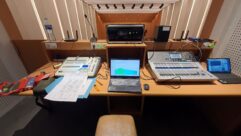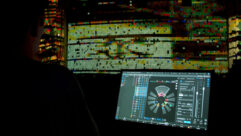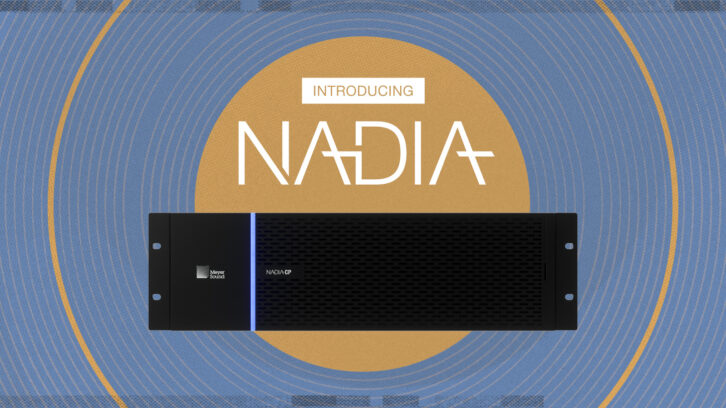
NADIA™ is an integrated, network-based digital audio processing and distribution platform that will power future installations of Constellation® by Meyer Sound. When incorporated into new Constellation installations, in addition to the processing power and inputs reserved for active acoustics, NADIA also provides separate inputs, processing, and matrixing to enable Spacemap® Go spatial sound with no performance compromises for either function.
“With NADIA, we have leveraged the latest advancements in DSP technology along with Milan-based AVB networking and combined them with Meyer Sound’s four decades of experience in dedicated signal processing for audio applications,” says Andy Davies, Meyer Sound Senior Product Manager. “The result is a uniquely powerful, scalable, and unified platform for signal processing and distribution. NADIA has been designed for our Constellation acoustic system, where the power of the new technology will allow more discrete zones for even higher resolution at substantially lower costs.”
The NADIA platform supports up to 96 inputs for Constellation acoustic processing as well as 128 independent program audio inputs and comprises three hardware modules. All NADIA-based systems require at least one NADIA-CP™ core processor that supports 128 outputs. Additional NADIA-CP modules can be added to increase the number of outputs in the extended system by 128 for each module. All communication to and from the NADIA-CP module is via a Milan-compatible AVB network. All processing is at 96 kHz/64-bit floating point resolution.
For analog input, the NADIA platform offers an input module, NADIA-AI12™, providing 12 channels of analog input with a preamp on each channel to accommodate Constellation microphones. For analog outputs, the NADIA-AO16™ provides 16 channels of analog line level output.
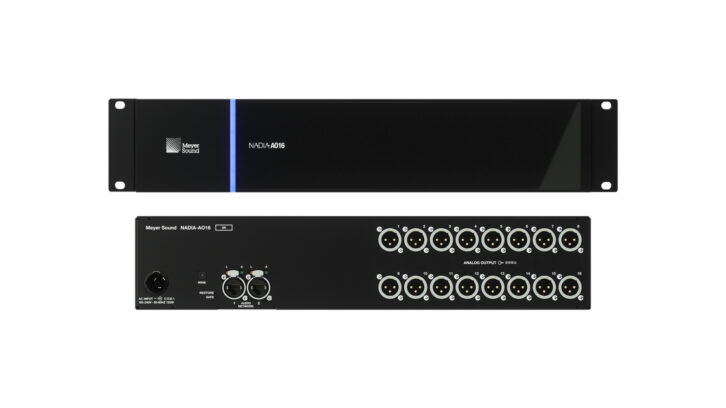
NADIA outputs can be routed directly via the network to Milan end-point loudspeakers such as ULTRA-X20™ series compact loudspeakers and USW-112P™ subwoofers. In an active acoustic system, which requires discrete output channels for a very large number of loudspeakers, this eliminates separate output modules and further reduces rack space and infrastructure requirements.
Each NADIA-CP module hosts up to 12 VRAS (Variable Room Acoustic System) processors, enabling the configuration of up to 12 discrete acoustical zones in a single unit. For scalability and cost efficiency, two licenses are available: standard for all 12 VRAS processors, and lite for three processors at a substantially lower licensing cost. When compared to the prior D-Mitri processor solution, Constellation systems based on NADIA will benefit from reductions in both rack space and overall costs.
In addition to meeting the unique requirements of active acoustics, the prodigious processing power of NADIA allows for a separate partition dedicated to integrating sound reinforcement systems alongside Constellation. A large number of inputs are reserved exclusively for Constellation, with additional inputs available for multi-channel spatial audio processing backed up by a new signal path featuring two matrix sections. Along with an input matrix — addressed by Spacemap Go for easy, intuitive, and creative spatial audio — users gain new levels of granularity and control with a separate output matrix.
For flexibility and seamless system integration, NADIA also can connect to Galileo® GALAXY 816 and 408 processors as well as mixing consoles equipped with direct Milan outputs, multi-channel computer playback from AVB-compatible Apple or Windows computers, and Avnu-certified format converters for other digital audio networks.
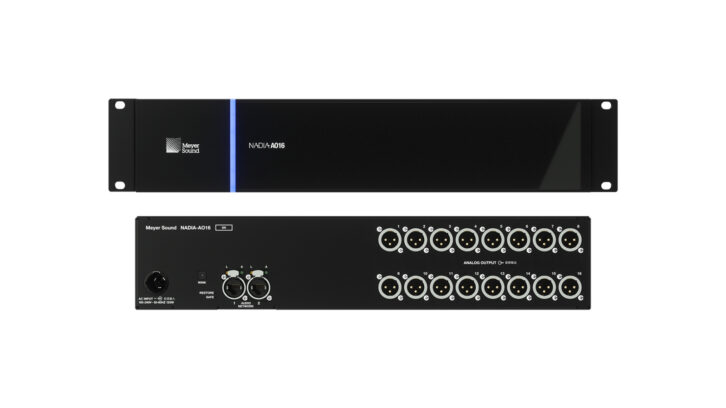
An updated control interface enhances how users work with Constellation’s active acoustics in their venue. When implemented, Spacemap Go NADIA provides a separate, award-winning user interface for controlling dynamic spatial sound in integrated PA systems. All of this is backed up by the power of CueStation 8 as a calibration and programming tool.
NADIA systems also can be controlled by OSC commands to enable integration with third-party protocols when incorporating NADIA-based systems into wider AV and building control systems.
“With the introduction of NADIA, Meyer Sound takes another giant step forward into the new era of Milan-based networked audio solutions,” says Meyer Sound Constellation Director Pierre Germain. “The benefits of NADIA to the system integrator and the end-user are obvious and substantial. Installations are faster, wiring and rack space requirements are reduced, while the end user enjoys lower energy consumption and more system flexibility. And perhaps most importantly Constellation systems will provide more zones at a lower cost for even greater acoustical resolution and room adaptability.”
According to Andy Davies, Meyer Sound takes a unique and uncompromising approach to integrating active acoustics and dynamic spatial sound. “Active acoustics and spatial audio have two very different sets of requirements,” he says. “With Constellation, we are not simply adding reverb to a spatial sound system but rather creating a bespoke acoustic environment. Now with the power of NADIA, we can introduce spatial sound into that acoustic environment — without compromising either function — to create extraordinary audience experiences for venues of the future.”
The NADIA digital audio platform is currently being specified in all new Constellation acoustic system designs.



